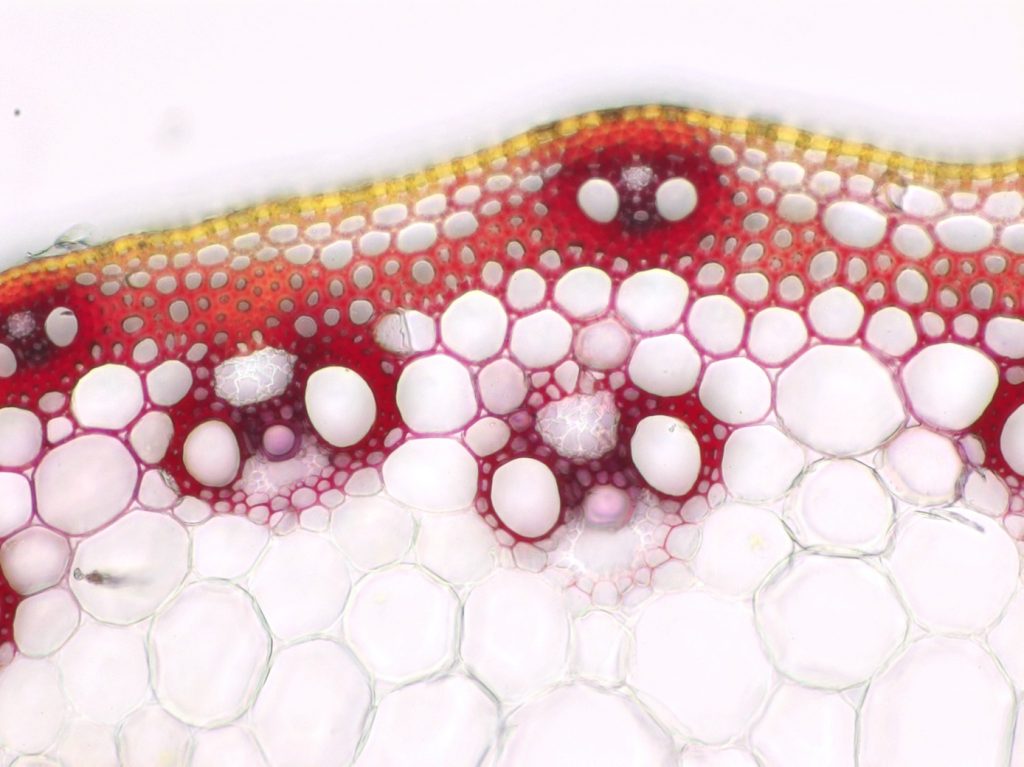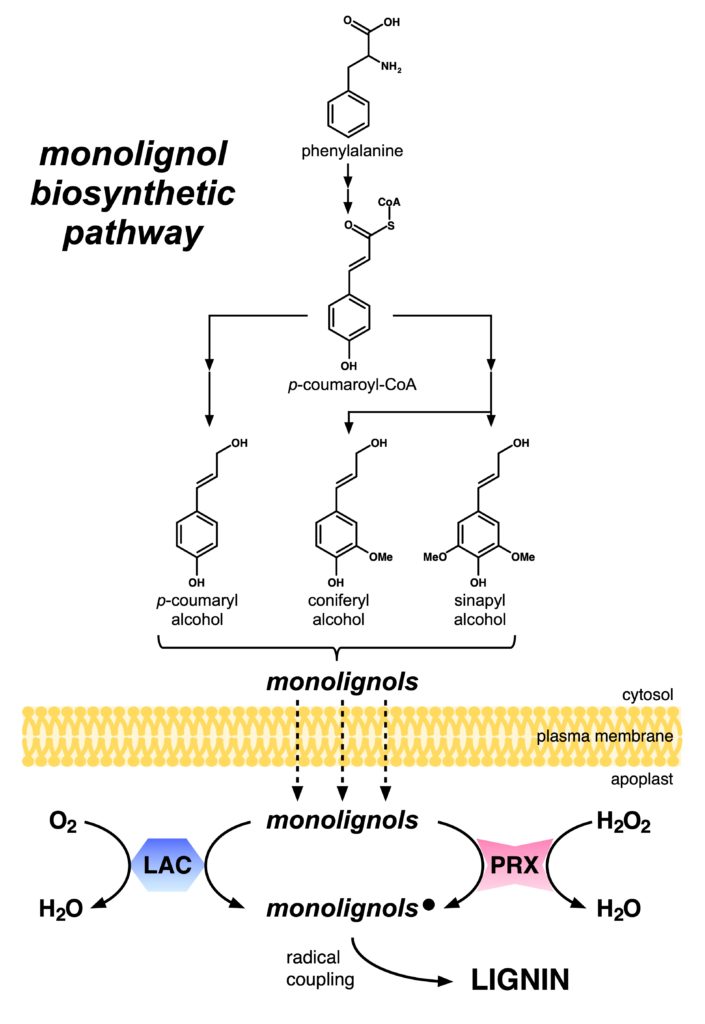What is Lignin?
Lignin, after cellulose, is the second most abundant biopolymer on Earth, accounting for 30% of the organic carbon in the biosphere. It is considered an important evolutionary adaptation of plants during their transition from the aquatic environment to land, since it bestowed the early tracheophytes with physical support to stand upright, enabled long-distance transport of water by waterproofing the vascular tissue, apart from working as a barrier against herbivores and pathogens.
Lignin is a complex racemic heteropolymer produced by the oxidative combinatorial coupling of mainly three p-hydroxycinnamoyl alcohol monomers, the so called monolignols. This biopolymer is mainly deposited in the secondarily thickened cell walls of specialized cell types such as tracheary elements and schlerenchymatic fibers and, together with hemicellulose, forms a complex matrix in which cellulose microfibrils are embedded.

Stem cross-section of the model C4 grass Setaria viridis stained with phloroglucinol, which stains lignin in red/pink.
Cell Wall Lignification
Cell wall lignification, as well as the incorporation of each monomer, are regulated in a spatio- temporal fashion and vary among tissues and taxa. Lignin deposition not only follows a developmental program but can also be triggered by several biotic and abiotic stresses. Monolignols are synthesized in the cytoplasm and transported to the cell wall, where they are oxidized prior to their incorporation into the polymer. Little is known about the precise molecular mechanism(s) of monolignol transport towards the apoplast.
After exported to the cell wall, monolignols are oxidized by peroxidases and/or laccases and further undergo polymerization through oxidative combinatorial radical-radical coupling. Because lignification is a strictly chemical process, any phenolic compound localized in the lignification type can potentially be used in radical coupling, illustrating the pliability of lignification. Indeed, in the past few years, metabolites from eleven different classes of phenolic compounds have been shown as naturally occurring lignin building blocks.
Although essential for plant growth and development, lignin limits access to cell wall polysaccharides for enzymatic degradation in the biorefinery and, thus, is a bottleneck inthe conversion of plant biomass into downstream products such as biofuels and biomaterials.
The fact that lignin is a non-linear polymer built with chemically diverse and poorly reactive linkages and a variety of monomer units, makes this phenolic polymer the major cell wall component responsible for biomass recalcitrance. Therefore, the bioengineering of lignin is a major goal to increase the efficiency of biomass processing throught genetic modification of plants to either accumulate less lignin or produce lignins that are more amenable to chemical degradation.

Simplified representation of lignin metabolism, including biosynthesis from primary precursor phenylalanine, transport of lignin monomers (monolignols) towards the apoplast and their oxidation by oxidases before polymerization. Image credits: Igor Cesarino.
Projects
Research in the LigninLab is focused on two major objectives:
Understanding lignin metabolism
The major goal is to unravel the molecular mechanisms underlying different aspects of lignin metabolism, including regulation, biosynthesis, monomer transport and polymerization. The research focuses mainly on C4 grasses, such as sorghum, sugarcane and the model C4 grass Setaria viridis (green foxtail).
Engineering secondary cell wall quality for the bioeconomy
The major goal is to engineer distinct aspects of lignin metabolism to generate optimized crops with enhanced biomass extractability for the production of downstream products in the biorefineries. Addtionally, we aim to bioengineer the shikimate/phenylpropanoid pathway to produce high-value aromatics in sugarcane, to boost the status of this plant as a multipurpose crop for the bioeconomy, generating “green factories”.
